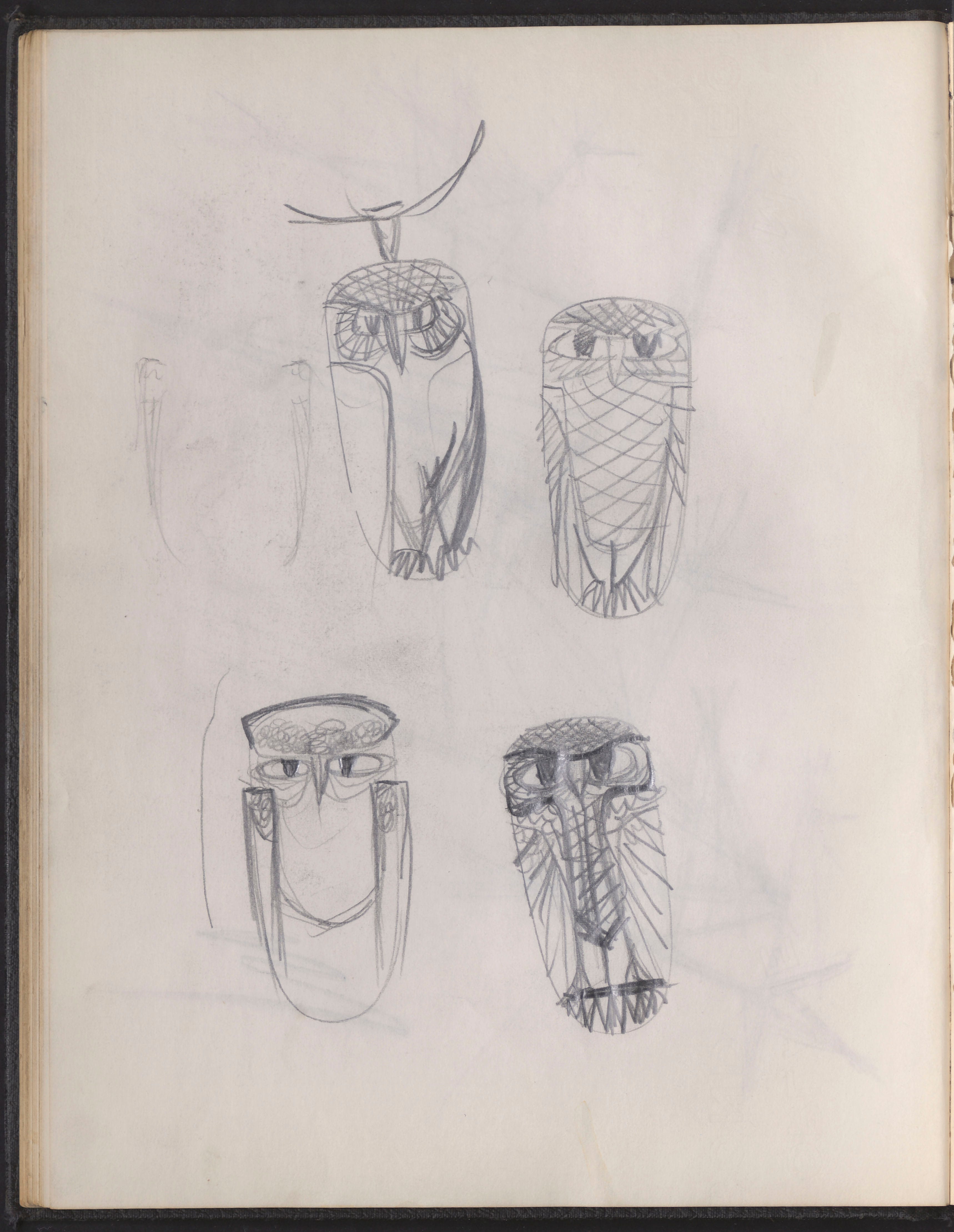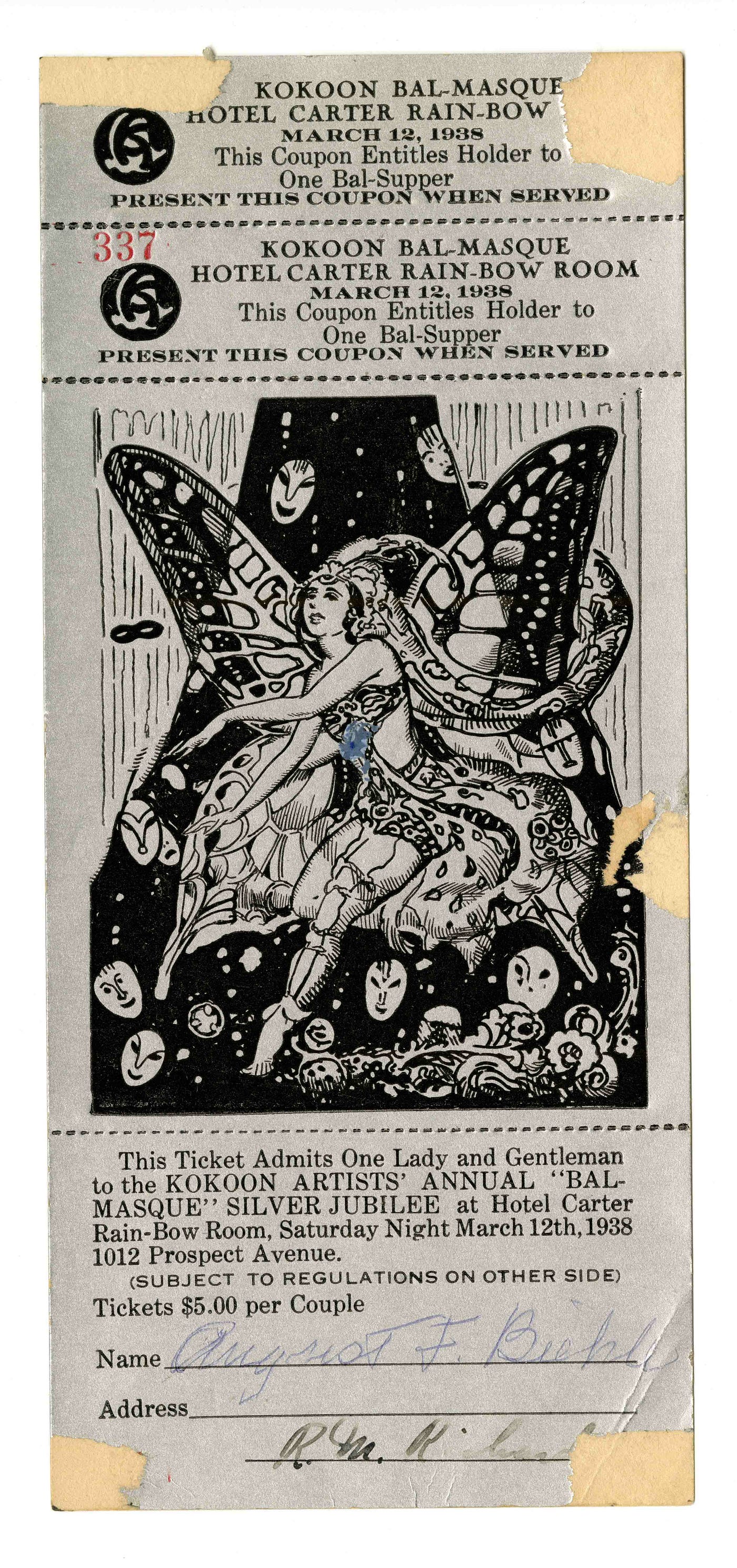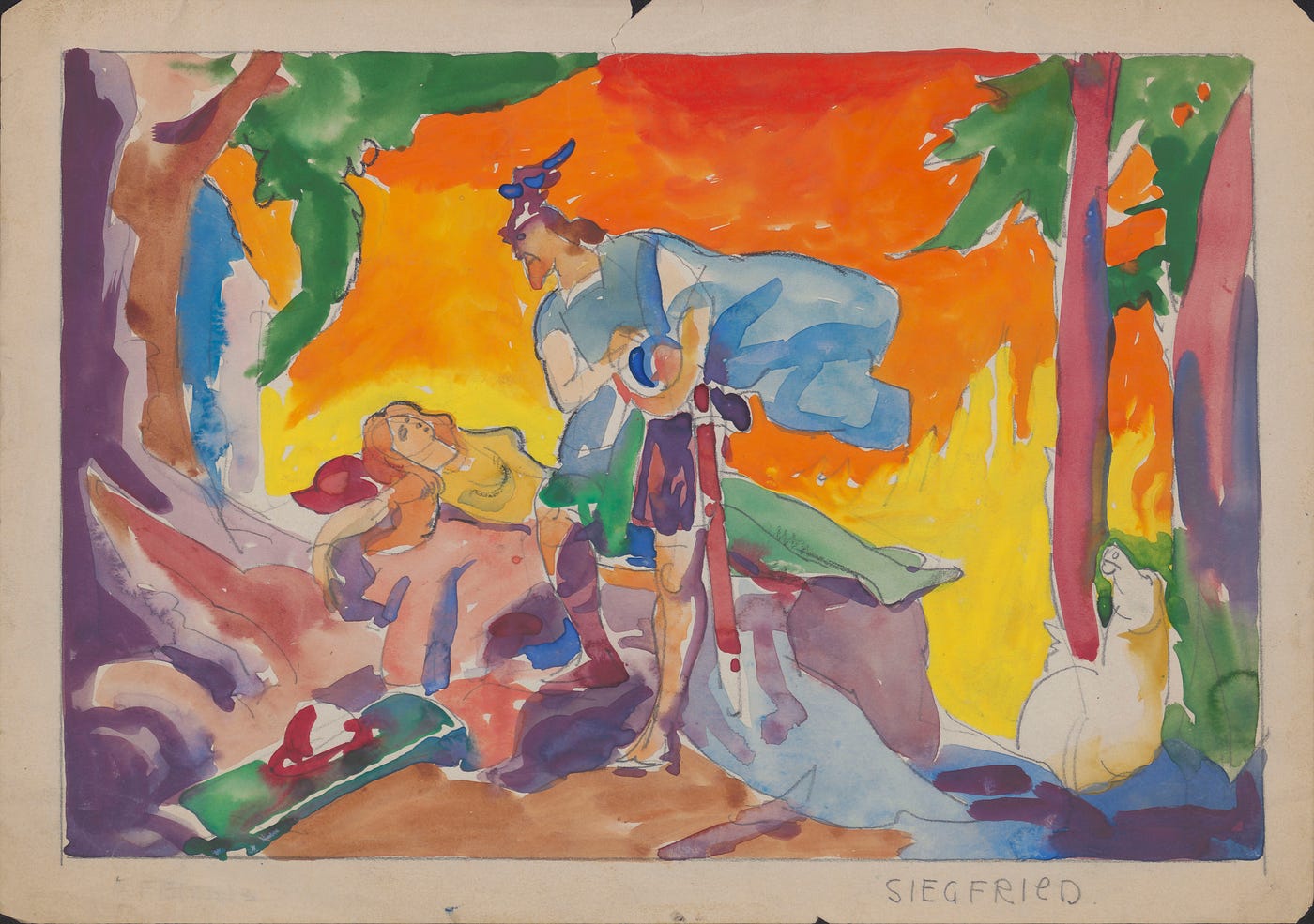By Sara Kunkemueller, Digitization Intern, Ingalls Library and Museum Archives
This summer season, I joined the Ingalls Library and Museum Archives as a digitization intern. My do the job included quite a few projects, from updating metadata to scanning guides for the Online Archive, but a great deal of my time was focused to digitizing artists’ collections in the archives. The very first materials I scanned were being John Paul Miller’s sketchbooks.
Miller (1918–2013) was a renowned Cleveland jeweler. Having graduated from the Cleveland Institute of Artwork (CIA), he returned after Military assistance in Entire world War II to be a part of the school’s personnel as a professor. At the very same time, he began manufacturing parts for local jewellery retail outlet Potter & Mellen. Even though Miller was properly trained in industrial style and design and put in his job concentrated on jewelry, he also harbored a deep adore for watercolor and generated both photographs of his travels and a wide range of video clip materials. Throughout his tenure at the CIA, long lasting more than 40 decades, he taught all these topics. Miller’s get the job done has been obtained by quite a few non-public collectors as perfectly as by the Cleveland Museum of Artwork (CMA) and the Renwick Gallery, amid other individuals.
Miller is recognised for his use of granulation, a procedure most effective regarded from archaeological jewelry. By way of the granulation method, very small beads of metallic are affixed to a larger sized form devoid of soldering. Miller used granulation to generate hugely difficult surface area textures and designs. Focusing on equally geometric abstractions and practical animal and insect sorts, Miller’s use of granulation lends his physique of function an overall stylistic coherence, weaving a modernist aesthetic into normal surfaces. His sketchbooks are filled with repetitive drawings, where by Miller performs with the kind of the granulation sample. Due to the fact Miller’s sketches are reasonably close in size to his closing products and solutions, there are quite a few pieces in the CMA’s assortment, in the archives’ Might Exhibit records, and in other artwork galleries that can be matched nearly particularly to these webpages.



Miller’s sketchbooks increase his overall body of work with thorough notes on development, which includes experimental notes produced in the workshop. Several are loaded with metal dust, and even compact scraps of discarded gold, suggesting that they lived on his workbench and that models were issue to revision during creation. In a single instance, Miller wrote out instructions for a short film following the development of one particular of his pieces, leaving driving a meticulous record of his approach. Alongside with selling prices and other facts, the within handles usually have a list of names or titles indicating which operates of his had been commissioned, designed for a distinct clearly show, or produced in series. Inside of sketchbook 19, there is also a lengthy handwritten insurance policy appraisal detailing the minutiae of a piece’s development, from products to methods. All of this is suitable to foreseeable future collectors and conservators of Miller’s do the job, but it also preserves his substantial information of metalworking and could possibly provide as a teaching help. Miller’s sketchbooks have a wealth of details about his pieces, his training practices, and his particular and specialist interests.
All 32 of Miller’s sketchbooks are presently obtainable on the CMA Archives’ electronic collections. Also obtainable to look at are comprehensive renderings of his rings and pendants, images from his excursions to California and Antarctica, and photographs of his performs from the May Present selection.
The remainder of my internship targeted on the archives’ August F. Biehle Selection, composed mainly of sketch products relating to different media and tasks in the course of Biehle’s prolific vocation. A son of German immigrant and attractive artist August Biehle Sr. (also represented in the electronic archives), Biehle (1885–1979) was a Clevelander who contributed immensely to the city’s booming creative character in the early 20th century. Right after finishing his art instruction in Germany, Biehle returned to Cleveland just as it was achieving its peak of inventive innovation and began working at the Otis Lithograph Firm. Above the program of his occupation, he created outstanding advertisements, murals, and paintings and turned a person of the most distinguished Cleveland university artists.
Biehle was also a member of the city’s preeminent eclectic artwork corporation, the Kokoon Arts Club. He brought with him both inventive talent and inspiration, obtaining viewed an influential exhibition of Der Blaue Reiter (The Blue Rider), a German Expressionist group, in Munich in 1912. This educated Biehle’s very own modernist will work and, in change, proved to be a stylistic influence for other club associates. The archives’ selection has a amount of Kokoon Club objects, like posters for club occasions, publication supplies, and ticket layouts for the club’s famous and lascivious balls. The Kokoon Club authorized Biehle to experiment with his official artistic schooling, and the interaction involving the club’s flourishing modernists encouraged him to delve into a variety of variations, including the building Art Deco and Cubism actions.

Of individual be aware in the Biehle assortment are sketch resources relating to murals he made for quite a few notorious structures across the metropolis, like the Kokoon Club, the Hofbräuhaus, and Herman Pirchner’s Alpine Village Theatre Cafe. These mural sketches, typically rendered loosely in gouache on paper or board, are hanging not only simply because of their natural beauty but also mainly because quite couple visual information of the murals stay. The Kokoon club, for example, featured quite a few Biehle works on its partitions in the course of its heyday. Nonetheless, soon after the club’s decline and disbandment in 1956, Biehle’s murals were demolished with the setting up. This is also genuine of his substantial function in Pirchner’s Alpine Village, notably Biehle’s depictions of fantastical scenes and common times from opera and theater. His impact prolonged to the Eldorado Club earlier mentioned the restaurant, exactly where Pirchner hosted well known attendees. In 1996, nonetheless, that construction was razed as very well. Whilst there are some photographic records containing Biehle’s demolished mural operates, they are typically targeted on modern society gatherings and the people today who frequented the areas relatively than on the artwork by itself. The sketch renderings of Biehle’s murals are some of the finest remaining documentation of his presence through influential structures in the town.

Past Cleveland, Biehle represents a marvelous encapsulation of the explosion of creative innovation in the early 20th century. Stylistically adventurous, Biehle’s pursuits shifted around the course of his job. He was a proficient decorative artist, acquiring apprenticed under his father, and his lithographs ended up in immediate discussion with other critical advertisers of his age. Biehle’s professional performs include wonderful scientific tests of his peers’ creations, these types of as many layouts for the Arrow Collar adverts that created American artist Joseph Christian Leyendecker (1874–1951) popular, as very well as numerous observational research that exhibit the depth of his formal education. Biehle’s prints ended up at the forefront of the shift from Art Nouveau to Artwork Deco. In the later pieces of Biehle’s job, his paintings took on a placing Cubist type and had been imbued with the dynamism of Futurism. His several talents make him an superb example of the toughness of Cleveland’s artistic scene at its height.
Biehle’s other operate features a assortment of colourful painted landscapes influenced by Cubism. The CMA holds in its collection one particular these types of painting as well as works on paper by the artist. To see the Biehle selection on line, please go to https://digitalarchives.clevelandart.org/digital/collection/p17142coll15.

